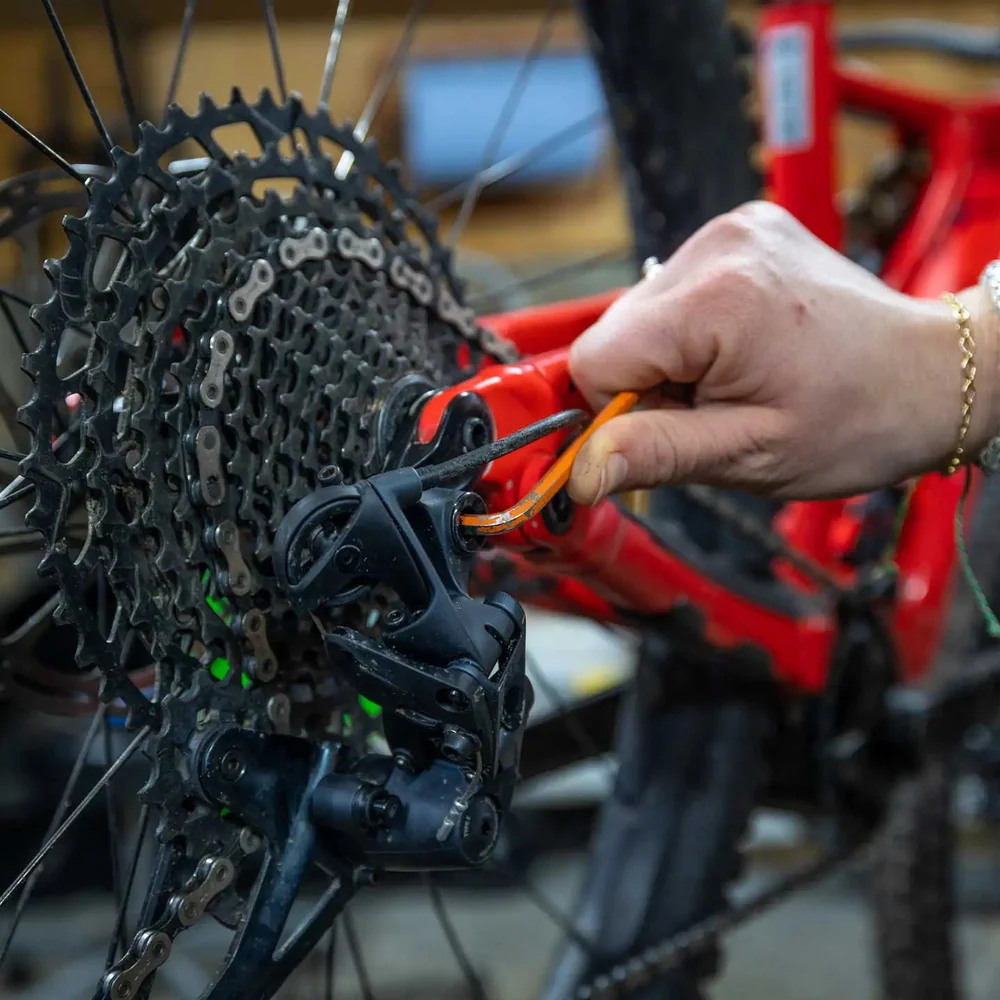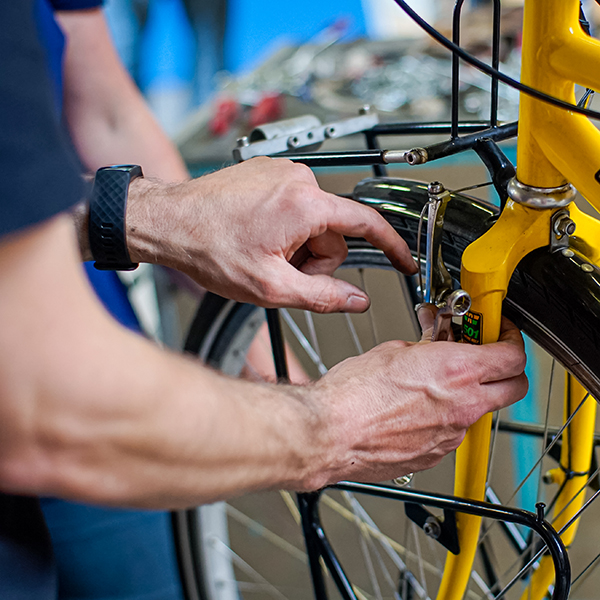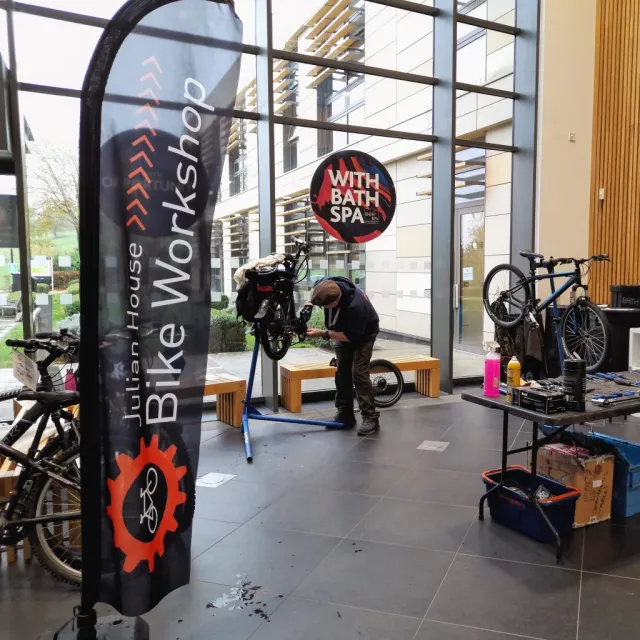I. Introduction

Regular bicycle maintenance and care are essential for keeping your bike in optimal condition. Not only does it improve the performance of your bike, but it also ensures your safety while riding. In this blog post, we will explore the importance of regular bicycle maintenance and the benefits of a well-maintained bike for both performance and safety.
II. Importance of Regular Bicycle Maintenance and Care
- Improved Performance: By maintaining your bike regularly, you can ensure that all the components are functioning properly. This, in turn, leads to improved performance and a smoother ride. Regular maintenance allows you to detect and fix any issues before they become major problems.
- Increased Lifespan: Proper maintenance increases the lifespan of your bike. By regularly cleaning and lubricating the moving parts, you can reduce wear and tear, prolonging the life of your bike. Additionally, by regularly checking and adjusting the brakes, gears, and other components, you can prevent premature breakdowns.
- Cost Savings: Regular maintenance can save you money in the long run. By identifying and addressing minor issues early on, you can prevent them from becoming more serious and costly problems. Simple tasks like cleaning and lubricating the chain can prevent the need for a costly chain replacement.
- Safety: A well-maintained bike is a safe bike. Regular maintenance allows you to check the condition of your brakes, tires, and other essential components. This ensures that your bike is in optimal working condition and reduces the risk of accidents caused by malfunctions.
III. Essential Bike Maintenance Tools and Equipment
a. Basic Tools for Routine Maintenance
- Allen Wrenches: These are essential for adjusting various parts of your bike, including the handlebars, seat post, and brake calipers. It’s important to have a set of Allen wrenches in different sizes to accommodate different bike components.
- Screwdrivers: Flathead and Phillips screwdrivers will be needed for various tasks, such as adjusting derailleur limit screws or tightening screws on brake levers.
- Adjustable Wrenches: These are needed for tasks that require a wrench, such as installing pedals or adjusting headset bearings. It’s a good idea to have both small and large adjustable wrenches to accommodate different sizes of nuts and bolts.
- Tire Levers: These are essential for removing and installing tires. They help you avoid damaging the tire or rim while changing a flat.
- Patch Kit: A patch kit is necessary to repair punctured tubes. It includes patches, adhesive, and sandpaper for preparing the tube surface.
- Pump: A bike pump is needed to inflate tires. There are various types of pumps available, including floor pumps and mini pumps, so choose one that suits your needs.
- Chain Lubricant: Regularly applying chain lubricant can help reduce friction and extend the life of your bike’s drivetrain. Make sure to use a lubricant suitable for your specific riding conditions.
- Cleaning Tools: Cleaning your bike regularly is important for removing dirt, grime, and debris, which can cause premature wear. Basic cleaning tools include brushes, sponges, and a bucket of soapy water.
b. Advanced Tools for Specialized Tasks

- Bottom Bracket Tools: These are used to remove and install the bottom bracket, a crucial component that connects the crankset to the frame.
- Cassette Removal Tool and Chain Whip: These tools are required for removing and installing the cassette, which houses the gears on the rear wheel.
- Spoke Wrench and Truing Stand: A spoke wrench is necessary for tightening or loosening spokes to true the wheels, ensuring they are straight and properly tensioned. A truing stand provides a stable platform for wheel maintenance.
- Cable Cutters and Housing Cutter: These tools are essential for cutting cables and housing during brake and gear adjustments. Using the right tools ensures clean and precise cuts.
c. Safety Gear and Equipment for Maintenance
- Gloves: Wearing gloves during bike maintenance protects your hands from cuts, abrasions, and grease. Look for gloves with good grip and dexterity.
- Safety Glasses: These protect your eyes from debris while cleaning or performing maintenance tasks. Safety glasses with anti-fog and UV protection are recommended.
- Work Stand or Bike Repair Stand: A work stand or bike repair stand is useful for elevating the bike to a comfortable working height, making it easier to perform maintenance tasks. It helps prevent strain on your back and allows better access to various parts of the bike.
III. Routine Maintenance Procedures
a. Cleaning and Lubrication
One of the most important aspects of bicycle maintenance is proper cleaning and lubrication. Regular cleaning and lubrication will not only keep your bike in optimal condition but also extend its lifespan. Here are some proper cleaning techniques for different bike components:
- Frame: Use a mild bike-specific detergent and a soft sponge or cloth to clean the frame. Avoid using pressure washers as they can damage the paint or push water into bearing areas. Rinse off the detergent with a hose or a bucket of water.
- Chain: Use a degreaser and a chain cleaning tool to remove dirt and grime from the chain. Scrub the chain thoroughly and then rinse it with water. After drying the chain, apply a lubricant specifically designed for bicycle chains. Be sure to wipe off any excess lubricant to prevent attracting dirt and grime.
- Derailleurs and Cables: Use a brush or a cloth to clean the derailleurs and cables. Remove any dirt or debris that might affect their functionality. Apply a lubricant to the pivot points and cable housings to ensure smooth shifting.
b. Tire Inspection and Maintenance
- Tire Pressure: Regularly check the tire pressure using a pressure gauge and add air if necessary. The appropriate tire pressure is usually indicated on the sidewall of the tire or in the bike’s user manual. Proper tire pressure ensures better grip, reduces rolling resistance, and prevents flats.
- Inspection: Inspect the tires for wear, punctures, or cuts. Look for any signs of damage, such as bulges or exposed threads. If you notice any significant wear or damage, it’s time to replace the tire.
- Inner Tubes: If you have a flat tire, inspect the inner tube for punctures. Inflate the tube slightly and listen for any hissing sounds or feel for escaping air. Patch any punctures or replace the inner tube if necessary.
c. Brake and Gear Adjustments
Properly functioning brakes and gears are essential for safe and efficient riding. Here’s how to adjust them:
- Brake Pads: Check brake pad wear and replace them if they are excessively worn. Adjust the position of the brake pads so that they make even contact with the rim when the brakes are applied. Check the cable tension and adjust it if necessary.
- Gears: Indexing gears ensures smooth shifting. Use the barrel adjuster on the derailleur to fine-tune the shifting performance. If the gears are not shifting smoothly, check the cable tension and adjust it accordingly.
IV. Advanced Bicycle Maintenance Tasks
a. Wheel Truing and Spoke Replacement
Wheel truing is a necessary skill to fix wheels that have become out of alignment due to uneven spoke tension or impacts. Here’s what you need to know:
- Identify Alignment Issues: Spin the wheel and observe any wobble or rubbing against the brake pads. Use a truing stand or a similar tool to identify which spokes need adjustment.
- Spoke Replacement: If a spoke is broken or damaged, it needs to be replaced. Remove the broken spoke and replace it with a new one of the same length. Ensure proper tension by using a spoke wrench and checking the alignment of the wheel.
b. Bottom Bracket and Headset Maintenance
The bottom bracket and headset are critical components that require regular maintenance for smooth operation. Here’s what you need to do:
- Bottom Bracket: Remove the crankset and clean the bottom bracket shell. Apply a waterproof grease or anti-seize compound on the threads and reinstall the bottom bracket. Ensure proper tightness and smooth rotation.
- Headset: Remove the stem and handlebars to access the headset. Clean the headset bearings and races and apply a thin layer of grease. Reinstall the headset and adjust the bearing tension for smooth steering.
c. Chain and Cassette Replacement
- Chain Wear: Use a chain wear indicator tool to evaluate chain wear. If the chain is stretched beyond the recommended wear limit, it’s time to replace it. Riding with a worn chain can cause premature wear on the cassette and chainrings.
- Cassette or Freewheel Replacement: To replace the cassette or freewheel, remove the rear wheel and remove the old cassette or freewheel using a cassette lockring tool. Install the new cassette or freewheel correctly, ensuring proper alignment and tightness.
V. Bicycle Safety Checks and Inspections
a. Pre-ride Safety Checks
Before embarking on any bike ride, it is crucial to perform pre-ride safety checks to ensure that your bike is in optimal condition. These checks should be a routine part of your cycling habits. Here are the key areas to inspect:
- Brakes: Test both the front and rear brakes to ensure they engage and release smoothly. Check the brake pads for wear and replace them if necessary. Adjust the brake cable tension if needed.
- Tires: Inspect the tires for any signs of damage, such as cuts, bulges, or excessive wear. If the tread is significantly worn down or the sidewalls are cracking, it’s time to replace the tires. Check the tire pressure using a pressure gauge and adjust it to the recommended range.
- Overall Bike Condition: Look for any loose bolts, cracks, or signs of damage on the frame, handlebars, stem, seat post, and other components. Ensure that all quick releases are properly tightened and secured.
b. Periodic Safety Inspections
In addition to pre-ride checks, periodic safety inspections should be conducted to identify any potential issues that may arise over time. Here are some key areas to focus on:
- Frame and Fork Integrity: Check for any visible cracks, dents, or signs of structural damage on the frame and fork. Inspect the welds and joints closely. If you notice any abnormalities, it is recommended to seek professional assistance or replace the damaged parts as necessary.
- Bearings: Examine the headset, bottom bracket, and wheel hub bearings. Spin each wheel to check for smooth rotation and listen for any grinding or clicking sounds. If there are issues with the bearings, they may need cleaning or replacement.
- Pedals: Inspect the pedals for excessive play or wobbling. Ensure that they engage and disengage smoothly. If there are any issues with the pedals, such as worn bearings or damaged threads, consider replacing them.
- Critical Components: Check the handlebars, stem, seat post, and seat for any signs of damage or wear. Ensure that they are properly secured and tightened to the recommended torque specifications.
c. Seeking Professional Help and Maintenance
While many basic maintenance tasks can be performed at home, there are certain complex maintenance tasks or repairs that are best left to professional bike mechanics. Here are some instances when seeking professional help is advisable:
- Advanced Repairs: If you encounter a mechanical issue that you are not confident in fixing yourself, it is recommended to take your bike to a professional mechanic. They have the expertise and specialized tools to address complex repairs.
- Suspension Service: Suspension forks and rear shocks require regular maintenance and servicing by professionals to maintain optimal performance. This may include rebuilds, oil changes, and adjustments to the damping system.
- Wheel Building: Building or truing wheels requires precision and knowledge. If you need a new wheel built or have issues with wheel truing, it’s best to have it done by an experienced wheel builder.
- Bottom Bracket Overhaul: Bottom brackets may need periodic maintenance, including disassembly, cleaning, and regreasing. Due to the specialized tools and knowledge required, it is best to have this task performed by a professional mechanic.
By following these routine maintenance procedures and tackling advanced tasks, you can keep your bicycle in optimal condition and enjoy a safe and smooth ride. Remember that proper maintenance enhances the performance and longevity of your bike, so make it a habit to regularly inspect and maintain all its components.

